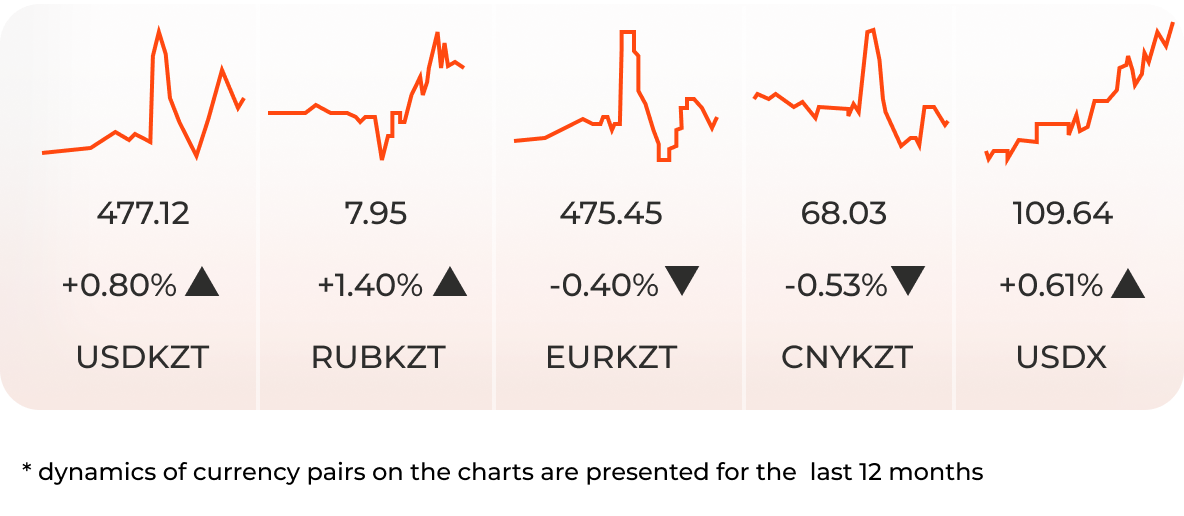
The national currency has demonstrated multidirectional dynamics: weakening against the dollar (-0.80%) and the ruble (-1.40%), but strengthening against the euro (+0.40%) and the yuan (+0.53%) over the previous week. Since the beginning of the year, the tenge has weakened against the dollar by 10.50%, the ruble – 38.02%, the yuan – 2.79%, but showed a slight strengthening against the euro (+0.04%).
The weekly volatility of the tenge exchange rate against foreign currencies decreased slightly: against the dollar to 0.39% and against the ruble to 0.78%. The weakening of the national currency was at a low volume of trading on the stock exchange.
The USDKZT pair trading volume over the past week decreased by 7.58% compared to the previous one (a decrease of 34.0% compared to the average weekly trading volume in 2022) and amounted to $ 372.95 million.
The Tenge Index
The Tenge Index decreased by 0.8% over the week, by 13.3% since the beginning of the year and amounted to 79.32 points.
The decline in the Index is due to double pressure: surging dollar and declining oil prices.
The current Index level corresponds to its value at the beginning of August 2022, when oil quotes were $ 4 higher, and the Dollar Index was equal to 106.6 points. One of the obvious reasons for the current imbalance is the euro, which weakened from 485 to 475 tenge. At the same time, the main reason is the continued low efficiency of the domestic foreign exchange market, when the tenge exchange rate is significantly influenced more by internal factors (currency expectations, the ratio of supply and demand in the foreign exchange market, etc.) than external ones.
Over the past 2 weeks, there has been an increase in the sensitivity of the tenge exchange rate to changes in external market conditions, than was observed in the summer season.
Jusan Analytics Opinion
The exchange rate has weakened from 473 to 477 tenge per dollar over the past week. This is due to an increase in the exchange rate sensitivity to external conditions compared to the summer period. Low trading volumes of the USD KZT pair and volatility signal the observed uncertainties in currency expectations and the wait-and-see position of market participants in response to the high value of the Dollar Index. Taking into account the current data on the slower-than-expected rate of inflation slowdown, the Fed is likely to raise the rate more decisively at the upcoming meeting, and thereby contribute to increased pressure on the currencies of developing countries and capital outflow.
However, the recent Statement by the Minister of Energy on the restoration of the Kashagan operation only by October of this year causes additional pressure from internal factors. And in our opinion, as a result, there are no strong grounds for a reversal of the weakening the national currency trend until the end of the year.

